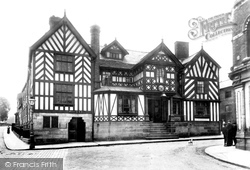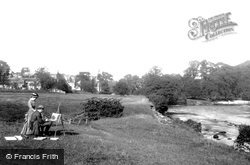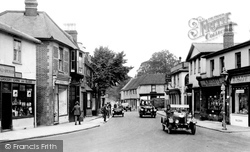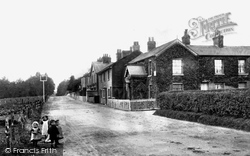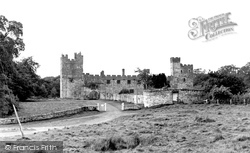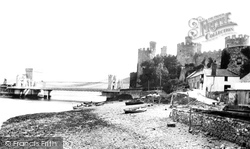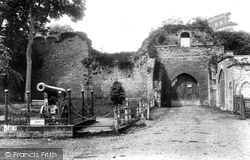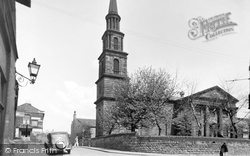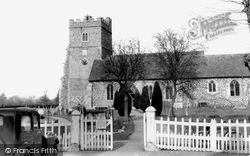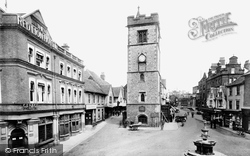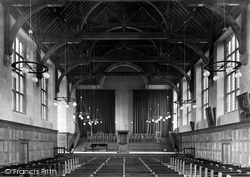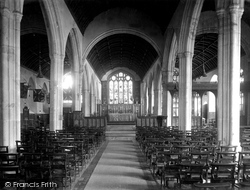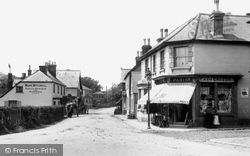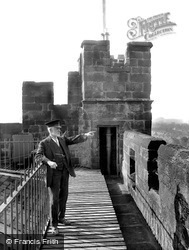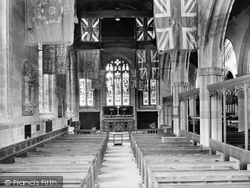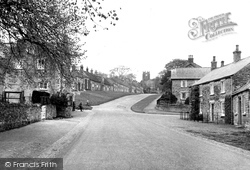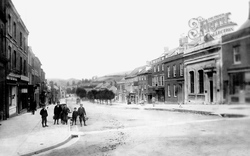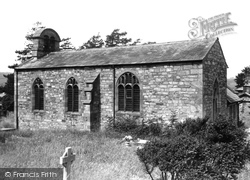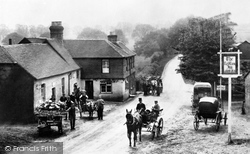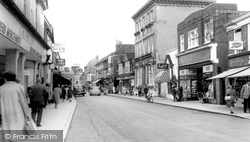Captions
231 captions found. Showing results 181 to 200.
Later photographs from the 1950s show no change to the building apart from the addition of a hanging sign at the front, and the replacement of the gas lamp-post with an electric, concrete one.
In the background are the romantic ruins of the Augustinian priory, and to the right are the tumbling waters of the River Wharfe.
This view, showing the centre of Ewell village, was taken looking north towards the Horse Pond and Spring Corner, and includes several splendid examples of the motor vehicles of the period.
The creeper-covered frontage of Balmoral Cottage on the left was the home of William Finch and his wife at this time.
A minor 14th-century castle, Naworth stands on a triangular piece of land by the river Irthling with deep ditch defences on three sides and a moat and drawbridge on the fourth.
There are mussel beds at the mouth of the river, while freshwater oysters found upstream have been famous for their pearls.
Perched on its cliff overlooking the rivers Teme and Corve, Ludlow was built in a strategic location on the Welsh borders.
The spire of St Peter's Church can be seen from all parts of Horbury.
The east window stained glass is from about 1840.
A rare surviving example of an English belfry, the Clock Tower, built in 1411, stands at the centre of the city with the narrow mediaeval street of French Row on its left and the wider Market Place on
The fine and spacious interior was poor acoustically although in 1941 over 800 people crammed into the hall for the entire London Philharmonic Orchestra conducted by Sir Malcolm Sargent.
A similar view to the one above, but this follows work carried out to the chancel by Sir Charles Nicholson in 1932.
Every building in this photograph was built in the latter part of the reign of Queen Victoria, as the railway station of 1858/9 brought about the establishment of the village of Liss, sometimes called
The parish church of St Mary’s was formerly the Priory.
The parish church of St Mary's was formerly the Priory.
17th- and 18th-century houses and cottages make Coxwold a delight to the eye.
We are looking westwards from the Market Place.
The church of St Chad, with two bells hanging in its open belfry, stands a short distance down the lane opposite the Fenwick Arms.
In the 18th century, The Red Lion was a popular stopping point on the London to Portsmouth road before the stage coaches began the long haul up to the wild and treacherous wastes of Hindhead Common, the
Boot's is on the right, where you could join their lending library, and next to it Woolworth's, where immediately inside on the left you used to be able to have a 'cuppa' and a bun.


